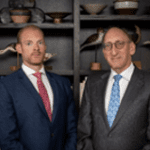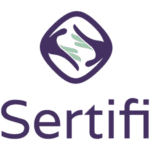 The ‘new normal’ as a term has been blatantly overused, but now with some very serious signals indicating a proper end to the pandemic come the summer of 2022, perhaps it can be applied one last time. In advance of this ‘great reopening’ and travel recovery period, it’s thus important to consider how you and your teams manage that ramp up in order to maintain service levels and maximize revenues.
The ‘new normal’ as a term has been blatantly overused, but now with some very serious signals indicating a proper end to the pandemic come the summer of 2022, perhaps it can be applied one last time. In advance of this ‘great reopening’ and travel recovery period, it’s thus important to consider how you and your teams manage that ramp up in order to maintain service levels and maximize revenues.
Managing labor shortages requires fast reactions, as much forecasting data as possible, patience, nimble recruitment efforts and ‘two fingers’ of scotch every evening. A full-fledged travel recovery throughout 2022 inevitably means onboarding new hires so as to refill the corporate churn with fresh faces who, fingers crossed, will one day achieve maximal productivity, innovative product introductions and seniority within your organization to keep the wheel turning.
But right now, in 2022, hotels have challenges in attracting top talent, many aren’t in our control. Here are some macro forces that you should consider so that you can empathize with young prospects:
- COVID-19 has laden hotels with a societal patina of unsafety for being high-contact workplaces
- The pay scale isn’t nearly as bright as finance, STEM or other sectors
- There are a lot of SOPs and technology to learn at the outset
- Much of the entry-level tasks are repetitive or lack the wiggle room for creative solutions
- Many hotels don’t offer meaningful mentorship or continuing professional development (CPD)
- Many hotels don’t identify clear paths of internal succession or self-actualization
- The business of hotels has increasingly become one of digitalized back office that’s incongruous with extroverted, guest-oriented personalities
What you can control
To address the first two, the sentiment regarding coronavirus is beyond our control; the public perception is firmly in the media and government’s hands. As for remuneration, our revenues and fixed costs simply cannot support the types of salaries and bonuses that investment banks or tech unicorns can afford (or need) to pay out to incentivize top talent in their respective industries, but that’s a whole other story.
The latter five items can be assuaged, though. In concert with the human resources department, now is the time to evaluate non-monetary motivations you are offering new hires so that they feel valued and so that you are more likely to retain them over the long run.
Always stay cognizant that the overall goal with any organizational policy update is to tolerate an increase in short-term costs to prevent a huge drawdown sometime in the future due to an inescapable erosion of human capital. This isn’t something that’s immediately measurable either.
The most salient example of this tradeoff comes when evaluating the breakeven point for recruitment and onboarding. It hurts emotionally and financially when your team spends all that time and money getting someone to sign up and go through months of training only for them to pull an about-face and quit within weeks of reaching a basal level of autonomy. That’s what we need to prevent because, in a labor shortage and lean corporate structure, a single resignation can disrupt the entire operation.
Even with all the technology and automation, hotels thrive due to their human capital. The best in the biz are companies that cultivate their ‘bench strength’ so that every team members feels like part of a family and are ready to step into a new role with gusto. From the managers who go beyond the call, to bring forward incredible new ideas that will evolve the brand right down to the frontline staffer who’s motivated to treat every guest with exuberant kindness.
Some possible solutions
Addressing those latter five points requires a systemic, continuous overhaul that we have helped guide our hotel clients through in the near past as part of an asset management consulting assignment. It’s not a one-size-fits-all matter, but our hope is that something from the list below can inspire you to investigate your options, primarily those that can be implemented on a relatively low-cost basis.
Here are some basic tips to get you underway:
- Think in terms of the concept of Maslow’s Hierarchy of Needs, with programs that target the upper end of the pyramid such as ‘developing a sense of belonging’, ‘expressions of creativity through one’s work’ and the ephemeral term of ‘self-actualization’
- Millennials and centennials want to feel heard, so while every junior role in every industry has its fair share of stripe-earning, that shouldn’t prevent you from making it transparent that all ideas are worth at least a modicum of consideration and that there aren’t any bad questions
- While it’s crucial to not stifle the creative spirits of youth, a great way to focus this energy is through one-on-one mentorship which can be systematized by making it a written responsibility of executives or senior managers and by providing a structure to train the trainers
- Those that eat together stay together, and therefore the value of a great meal program, as well as a relaxing setting for team members to enjoy said meals, cannot be understated
- Internal advancements within an organization should be celebrated and promoted, while company departures (on good terms), whether for retirement or moving on to new prospects, should likewise be treated with reverence and best wishes
- All the various pieces of the tech stack are indeed overwhelming, so you must find ways to consolidate operations under as few platforms as possible to limit the onboarding load while also repeating the mantra that becoming tech-fluent is now a necessary skill for any career path
- To temper the expectations of extroverts who think that hospitality only involves gladhanding guests, make it abundantly clear from the start what the job will entail as well as what the promise of the future holds
This article may not be reproduced without the expressed permission of the author.




















